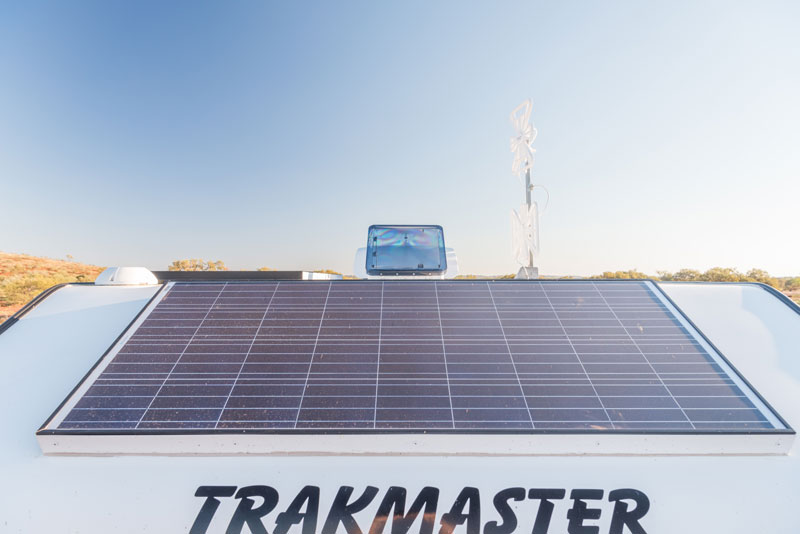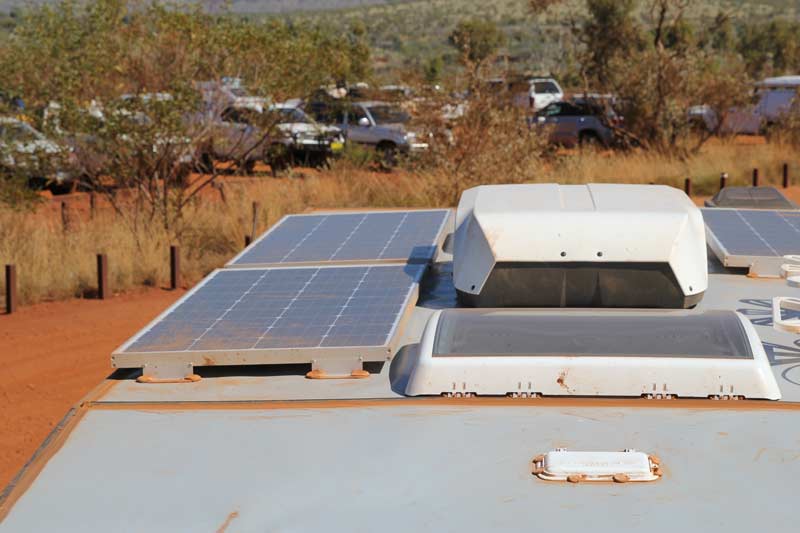Caravan Solar Power Questions Answered
We Aussies love the sun, and we love camping. So it makes sense to harness the sun to help us enjoy our camping adventures using solar power. So, following on from last year’s intro to using solar power while camping, we’ve delved a little deeper to find out how solar power technology can be used to improve your next camping trip.
CAN I POWER MY WHOLE RV ON SOLAR?
Possibly, but only in specific circumstances is the not-so-short answer. In many cases, solar can’t completely replace a generator, alternator or inverter because you can only fit a limited amount of solar panels on a caravan’s roof, and the power is not always enough to power everything you need indefinitely. So if you’re the type of camper who likes to park up at a bush camp for a long period of time without using your car and with a large range of power-hungry appliances such as a fridge, toaster, washing machine, air-conditioner etc., then the answer is no.
If, however, your car is regularly running, allowing the alternator to recharge your RV’s house batteries, you are mindful of your power consumption and can live without the air-conditioning then, yes, you will be able to get by on solar (and battery power) alone, without the need for a generator, inverter, or mains power. Things you probably should not attempt to run on solar include an oven, toaster, stove, microwave, hair dryer, air-conditioner and washing machine, and any items with a heating element that use very high amounts of power.
HOW MUCH SOLAR DO I NEED?
This is the million dollar question, to which there is no easy answer. There really is no typical solar setup, especially with RV systems, as the number of accessories and the style of camping changes dramatically from camper to camper.
Because of the limited roof space, most RVs could only fit a 1-1.5kW system up there, but that should be enough for your basic needs. An average-sized van should be able to host between 200-300W of solar, which would produce enough energy for light power needs such as 12V lighting, water pump, 12V TV and an energy-efficient 12V fridge of around 50L in size. You’ll need at least 500W of power to run a family-sized fridge.
The best plan of attack is to work out your total energy consumption, then design your solar power system accordingly, as all circumstances are different. You need to consider the amp hour capacity you require, the DC charging system and the period of time you’ll be without mains power. To add up your total power consumption (amps) for an average day, you simply divide the wattage of each item by 12 then multiply that amount by the number of hours the device is going to run and add them all up.
Generally, a typical RV solar system would comprise panels (rated in watts), a regulator (to control volts to battery), a battery (to store energy), and a monitor (to check on power stored).
HOW MUCH DO SOLAR PANELS COST?
A basic, portable 120W solar panel with MPPT regulator will cost around $400-500, not including inverters or battery chargers.
WHY DO I NEED A SOLAR REGULATOR?
Most 12V solar panels on the market have an output voltage of 18-22V, while the charging voltage of a 12V battery ranges from 13-14.4V in different charging stages. We need a regulator to drop down the voltage, detect the battery’s state of charge and apply adequate voltage to the battery in different charging stages
HOW DO I KNOW IF MY SYSTEM IS WORKING PROPERLY?
Once they’re set up, solar power systems are basically maintenance-free (apart from cleaning) and will run autonomously. But the best thing you can do to ensure everything is working as it should be is to use an integrated power management system, such as BMPRO’s BatteryPlusSR, which has an inbuilt solar regulator.
WHAT CAN GO WRONG WITH A SOLAR SETUP?
Apart from the obvious (the weather!), the biggest risks to solar power are cycling the batteries too much, using undersized cabling and improper storage. Always keep your system above 50 per cent capacity and always isolate the auxiliary battery when in storage to prevent discharge. And keep it on a 240V charger!
Another common mistake is buying a 24V panel for a 12V system.
Additionally, most solar regulator/controllers are designed for AGM batteries. If you are using gel or lithium batteries, make sure your controller can provide the charging profiles for gel and lithium batteries. On a rainy day, expect your solar system output to drop to about 20 per cent of its rated output. If you decide to park the van under the shade the output will be even less than that.
Like this Post? Share it!






